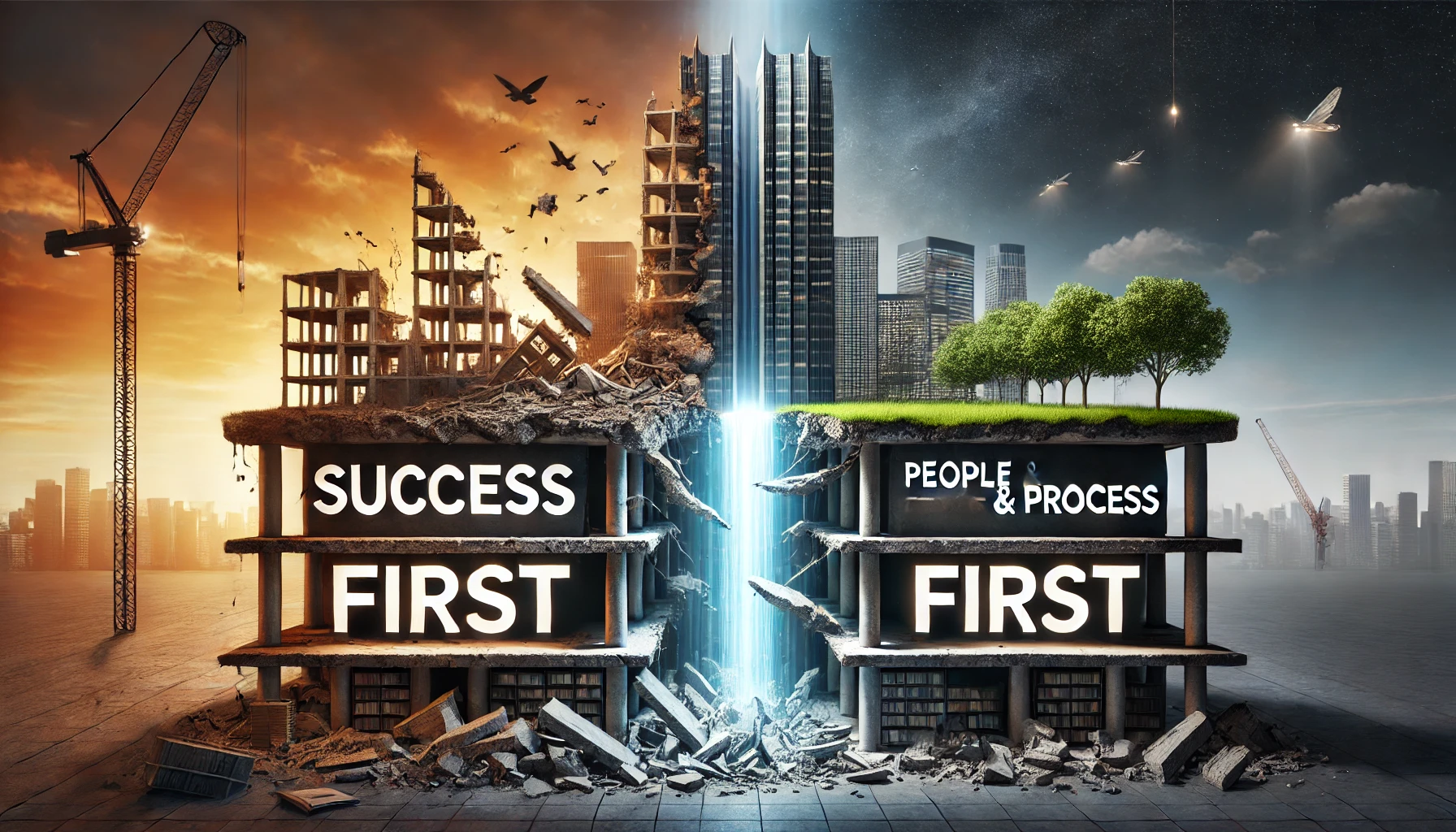Business transformation is a buzzword thrown around in boardrooms and LinkedIn think pieces, often tied to big successes, industry disruption, and digital revolutions. The problem? Focusing on success doesn’t actually create success.
Most companies chase outcomes—faster growth, higher profits, better customer retention—without fixing the underlying people, processes, and structures that make success repeatable. Real transformation doesn’t happen because of a flashy new strategy or an innovative product. It happens when companies focus on how they work, not just what they want to achieve.
In other words:
✅ If you focus on the process, transformation happens.
✅ If you focus on relationships and connections, trust happens.
✅ If you focus on changing yourself, everything else follows.
So, what’s the right way to approach business transformation? It starts with understanding the order in which real change happens.
he Four Stages of Business Transformation (And Why Most Companies Get Them Wrong)
Transformation isn’t about chasing trends—it’s about making foundational changes in the right sequence. Here’s the step-by-step approach successful companies take:
1️⃣ Cultural & Organizational Transformation (People First, Always)
You can’t build a great business with misaligned leadership, disengaged employees, or a resistance to change. Culture is the first piece of transformation because, without trust, transparency, and adaptability, any operational or technological shift will fail.
How to Get This Right:
✔️ Align leadership on vision and strategic priorities.
✔️ Foster a culture of continuous learning and adaptability.
✔️ Encourage open communication to reduce resistance to change.
🚀 Example: Before Microsoft transformed its business, CEO Satya Nadella first transformed its culture—shifting from internal competition to collaboration, innovation, and a growth mindset.
🛑 Myth: “If we introduce a new system or tool, employees will adjust.”
✅ Reality: People don’t resist change—they resist change that doesn’t make sense. If culture isn’t strong, no amount of technology will create adoption.
2️⃣ Process Transformation (Fix How Work Gets Done)
Once the right culture is in place, the next step is streamlining and optimizing processes. A company with poor internal processes will struggle with bottlenecks, inefficiencies, and wasted effort.
How to Get This Right:
✔️ Identify where work slows down and eliminate friction.
✔️ Automate repetitive tasks to free up strategic focus.
✔️ Improve cross-functional collaboration by breaking down silos.
🚀 Example: McDonald’s didn’t start rolling out AI-powered drive-thrus overnight. First, they optimized food prep workflows, improved digital ordering, and streamlined supply chains.
🛑 Myth: “Innovation is what makes companies competitive.”
✅ Reality: Innovation is useless if the underlying processes don’t support it.
3️⃣ Business Model Transformation (Reimagine How You Deliver Value)
Once culture and processes are in place, it’s time to rethink how the company creates revenue. Business model transformation involves rethinking services, pricing structures, and customer engagement strategies to drive long-term sustainability.
How to Get This Right:
✔️ Test and validate new revenue models before full-scale rollout.
✔️ Shift from transactional sales to recurring value-based models.
✔️ Ensure the business model aligns with people and operational strategy.
🚀 Example: Netflix optimized streaming infrastructure before fully transitioning from DVDs, ensuring that the digital shift was profitable, scalable, and seamless for customers.
🛑 Myth: “Launching a new product or service guarantees growth.”
✅ Reality: Without strong internal alignment, new business models will fail due to execution gaps and poor decision-making.
4️⃣ Domain Transformation (Expand Into New Markets the Right Way)
Once a company has the right people, processes, and business model, it can expand into new industries or markets. This is called domain transformation—leveraging expertise in one area to create new revenue streams.
How to Get This Right:
✔️ Use technology to expand offerings strategically.
✔️ Enter adjacent industries where you have existing strengths.
✔️ Scale in a way that aligns with long-term business goals.
🚀 Example: Amazon didn’t jump into AWS and logistics until it had perfected e-commerce operations. The foundation was in place, so expansion was a natural step.
🛑 Myth: “Companies should expand first and figure out operations later.”
✅ Reality: Expansion before operational readiness leads to brand dilution, wasted resources, and execution failures.
Why This Order Matters: The Secret to Sustainable Success
Too many companies focus on quick wins, technology investments, and chasing new markets before fixing the core issues within their business. But the truth is:
- If you focus on success, you might fail.
- If you focus on process, success will happen naturally.
- If you focus on relationships, trust will follow.
- If you focus on changing yourself, the business will change with you.
The Sustainable Path to Transformation:
1️⃣ Change the way people think and work → Organizational Trust.
2️⃣ Refine how work gets done → Process Efficiency.
3️⃣ Align the business model to value creation → Growth.
4️⃣ Leverage strengths into new industries → Expansion.
Businesses that follow this order don’t just transform—they evolve, adapt, and scale with purpose.
Final Thought: Where Should You Start?
Instead of asking “How do we transform?”, start with:
👉 Do we have trust and alignment? (Cultural transformation)
👉 Are our processes supporting efficiency? (Process optimization)
👉 Is our business model creating the right value? (Revenue strategy)
👉 Are we ready to expand beyond our core? (Domain expansion)
Transformation is not about chasing success—it’s about building the right foundation. Do that, and success will follow.





